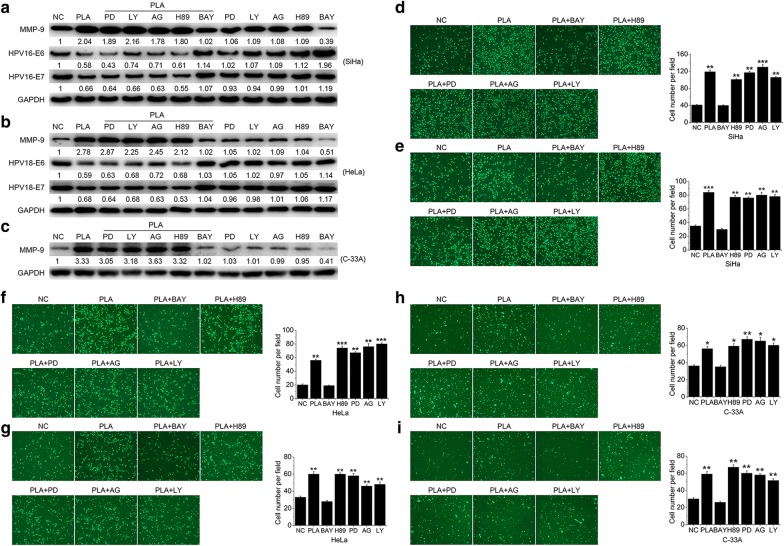Fig. 3.
Effects of NF-κB on the PLA-induced migration and invasion of cervical cancer cells. a‒c SiHa (a), HeLa (b), and C-33A (c) cells were pretreated with 10 μM PD98059 (PD, a specific antagonist of ERK1/2 kinase), LY294002 (LY, a selective antagonist of PI3 K/Akt), AG1478 (AG, a potent antagonist of EGFR), H89 (H89, a selective antagonist of PKA), and BAY11-7082 (BAY, an inhibitor of NF-κB) for 90 min and then stimulated with 10 mM PLA for another 24 h. The expression of E6 and E7 (for SiHa and HeLa) and MMP-9 (for SiHa, HeLa, and C-33A) was measured by Western blot analysis. GAPDH expression was evaluated as a loading control. One representative of three different experiments, for each of the analyses performed, is shown. d‒i SiHa, HeLa, and C-33A cells were pretreated with the above inhibitors for 90 min and then stimulated with 10 mM PLA for another 24 h. Then, cell migration (d, f, h) and invasion (e, g, i) were monitored by Transwell assays. The number of migrated and invaded cells was obtained by comparison with the control cells. Data are presented as the means ± SDs of three independent experiments. *P < 0.05, **P < 0.01, and ***P < 0.001 compared with the control

